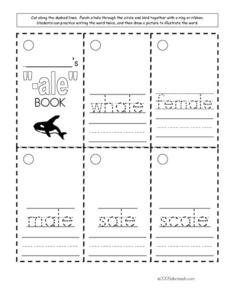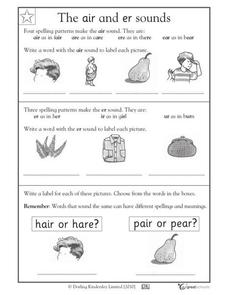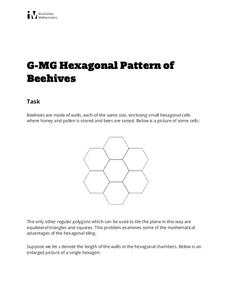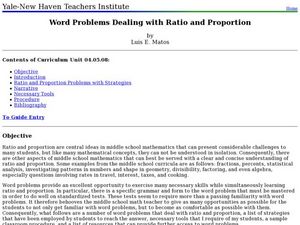Curated OER
Spanish-English Cognates in the ELL Classroom: Friends or Foes?
Define the meaning of a cognate and use the concept to help Spanish-speaking ELLs connect their first language to English. Middle schoolers explore Latin roots to find cognates in both languages. They relate the Spanish and English word...
Curated OER
ank Word Search
In this vocabulary worksheet, students study the "-ank" rhyming pattern by finding 12 words in a word search puzzle. There is a word bank provided.
Curated OER
Tiles, Blocks, Sapphires & Gold: Designing a Treasure Map
Young cartographers in groups hide treasure at school and then create a map to find it using pattern blocks and tiles. They make paintings with clues to create a visual representation of the location of their treasure. Groups present...
Curated OER
The -ale Ending
This is a very useful resource to use with younger or special needs learners. It includes five printable worksheets which all reinforce the -ale ending and spelling pattern. Printing practice, fill in the blank, complete the pattern, and...
Florida Center for Reading Research
Advanced Phonics: Syllable Patterns, Syllable Game
A game designed to support advanced phonics instruction challenges scholars to read and break a word into syllables. If the player is correct, they move their game piece forward on the board. Whoever gets to the end first wins!
Curated OER
The oa, oy, and ow Sounds
Focus on the vowel sounds /oa/, /oy/, and /ow/ in this spelling patterns worksheet. The sounds are split into three sections, with learners observing how each can be spelled differently in familiar words. They write words beneath...
Curated OER
The ai and ar Sounds
These words sound the same but are spelled differently, giving scholars a chance to practice spelling patterns and rhyming words. First they read that the /ai/ vowel sound can be made with three different spellings. Learners label three...
Curated OER
The ee and ie Sounds
Put to use the old saying, "When two vowels go a walking, the first one does the talking." Scholars focus on the /ee/ and /ie/ sounds and spelling patterns that create them. First, they label four pictures with the ea...
Curated OER
Vowel Sounds: /air/ and /er/
All the best readers started out the same way. Build the foundational skills needed to recognize vowel sounds like /air/ and /er/. Early readers write a word to label each of nine images. Each image focuses on a different spelling...
Curated OER
The ee Sound
When two vowels take a walk, the first one does the talking! Scholars see this motto put to use as they study the /ee/ sound in various spelling patterns. Learners read a short introduction on this concept before reading several example...
Curated OER
The ai Sound
There are multiple vowels that make the /ai/ sound within words; show your learners three of them in this spelling instructional activity. They look at some examples, then complete three sets of words by adding in the vowels to make this...
Curated OER
Odd One Out
Which of these pictures doesn't belong? Based on the first picture in each row, learners circle the picture that doesn't rhyme with it. Then, they get printing practice with rhyming CVC words pie and cry by tracing an outline....
Curated OER
Animated Alphabet
Students explore English by completing an interactive language history activity. In this word recognition lesson plan, students discuss word formations and the phonetic relationship between letters. Students identify the origin of...
Illustrative Mathematics
Hexagonal Pattern of Beehives
Young geometers and biologists investigate the math of nature in an activity that is just the bee's knees. Participants will study the tessellations of hexagons in a beehive, along with the natural rationale behind the specific shape....
Curated OER
Spelling List 6: Sight Words, kn/wr Words, and Academic Vocabulary
In this spelling activity, students practice their spelling words that include sight words, kn/wr words, and vocabulary. Students practice spelling 16 words.
Curriculum Corner
“I Can” Common Core! 3rd Grade Language
Support third graders with developing their language skills using this Common Core checklist. With each standard written as an I can statement, children are given clear learning goals to work toward throughout the year.
Howard County Schools
Setting the Table
How many people can fit around a table? Depends on the size of the table, right? Explore patterns to generate an equation for the number of people that can fit around a table given its size.
Curated OER
Word Problems Dealing with Ratio and Proportion
Mindful middle-schoolers read and solve a number of word problems. Learners copy and discuss what they believe their strategies are in solving each problem. They also write their findings and share with the rest of the class.
K12 Reader
She Needs Less Shell
Supply your pupils with some practice of the short /e/ sound. They read brief poem that includes several examples of words that include this sound. Once they are finished reading, class members respond to three reading comprehension...
Curated OER
The Silent "e"
For this silent "e" worksheet, students look at twelve words, say them to themselves and hear the sound that the vowel makes in each word. Students then write down their own meaning for the word or match from the definition bank provided...
Curated OER
8th Grade Spelling: ie, ei Spelling Patterns
In this 8th grade home connection spelling practice worksheet, 8th graders examine 20 spelling words that feature "ei" and "ie." Students write the words 1 time each.
Curated OER
Probability and Patterns with Pascal
In this Pascal activity, students solve word problems dealing with probability and patterns based on Pascal's triangle theory. Students complete 10 problems total.
Curated OER
Linear Patterns in Data
Eighth graders extend their learning of graphing linear equations and are introduced to connecting patterns in tables and graphs to represent algebraic representations. They then determine patterns and extrapolate information from these...
Curated OER
Fairy Tales
Students listen as the teacher reads fairy tales to students and identify patterns. They listen as the teacher re-reads the fairy tales and signal or recite patterns as they listen. Students identify patterns in the fairy tales. They...























